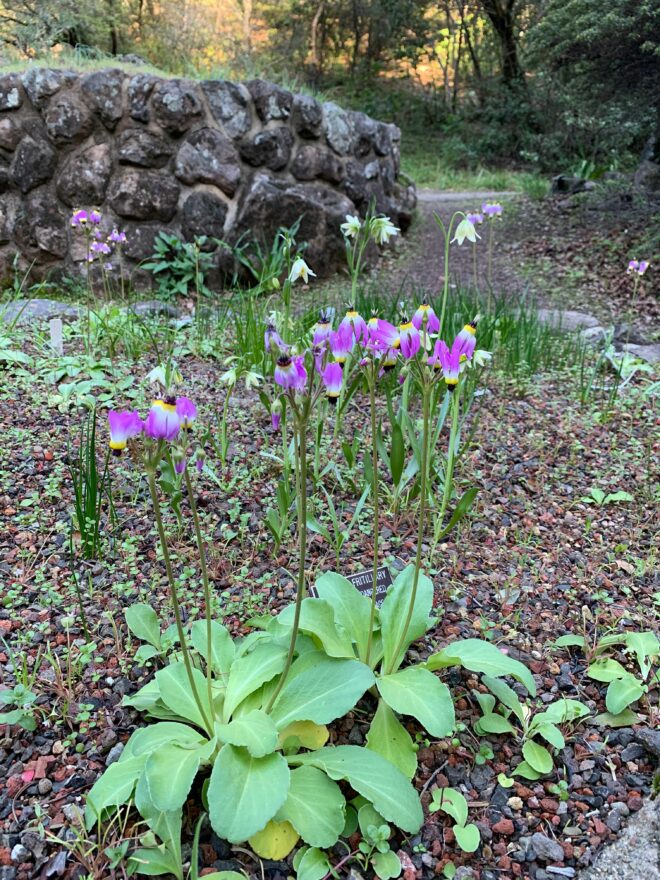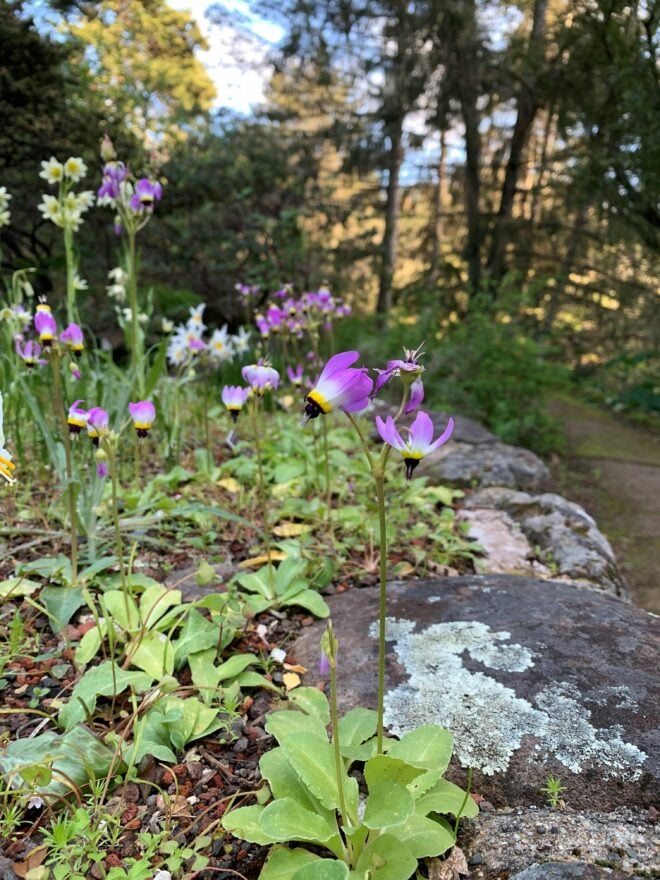
California Native Plants for the Garden: Bonus Profiles – Part 1

Contributor
- Topics: Plants You Need
Summer 2023
Originally published in 2005, the highly regarded California Native Plants for the Garden is now in its 11th printing. While writing the book, authors Dave Fross, Bart O’Brien, and Carol Bornstein had a tough time deciding which plants to include in this award-winning reference. Some personal favorites ended up on the cutting room floor due to space constraints and, to celebrate this new printing, they have revised and updated three of those profiles for online viewing only. Pacific Horticulture is delighted to publish them.
This is the first in a three-part series.
Primula (Dodecatheon) clevelandii var. insularis
Shooting Star
Primrose Family (Primulaceae)
Plant Type: Deciduous herbaceous perennial.
Geographic Zones: All except deserts and high mountains.
Light: Sun to partial shade (best in partial shade).
Soil: Adaptable, preferably well-drained.
Water: Drought tolerant.
Natural Habitat and Range: Cismontane grassy slopes and flats in chaparral, foothill woodland, and valley grassland; central California, the Channel Islands, and Guadalupe Island, Mexico.


The whimsical flowers of shooting stars delight both children and adults, especially when an entire hillside is firing off with the aptly named blossoms. These delicate-looking plants have light green, somewhat succulent basal leaves that emerge in autumn as the rainy season begins. This signals the end of the plant’s summer dormancy. Almost immediately, the central flower stalk starts to elongate, reaching 8 to 12 and occasionally 16 inches tall. Nodding gracefully at the top is a whorl of cyclamen-like blossoms in varying shades of pink with bands of yellow and white. The erect buds bend downward upon opening, the upswept petals seeming poised for flight. Changing direction yet again, the spent flowers mature into upright tan capsules, the ripening seeds within rattling at the slightest breeze.
Like their cyclamen relatives, shooting stars require summer dormancy. A truly Mediterranean-climate species, they grow during the moist winter season and wait out the long dry summer. Therefore, keep them out of range of summer irrigation, otherwise the tiny rootstocks will surely rot. They thrive in the dappled shade of oaks and shrubs such as western redbud, mountain mahogany or hollyleaf cherry. The succulent leaves and rootstocks are magnets for snails, slugs, and gophers, so be prepared to protect the plants from these annoying pests.
To ensure success, try growing shooting stars in pots, nestling them into an established planting when the flowers begin to unfold. Then whisk the pots away as the foliage yellows, neglecting them until the next rainy season. Due to their diminutive size, shooting stars are ideal combined with other compatible plants in a trough garden. Or mix them with dudleyas, delphiniums, smaller buckwheats, or bulbs; broadcast seeds of dainty annuals; add some rocks for structure; and you have the makings of a perfect rock garden. The drier the garden bed in summer, the happier your shooting stars and companions will be.
California Native Plants for the Garden is now in its 11th printing available at Native Sons Nursery.
This article is sponsored by: Western Horticultural Society










Responses